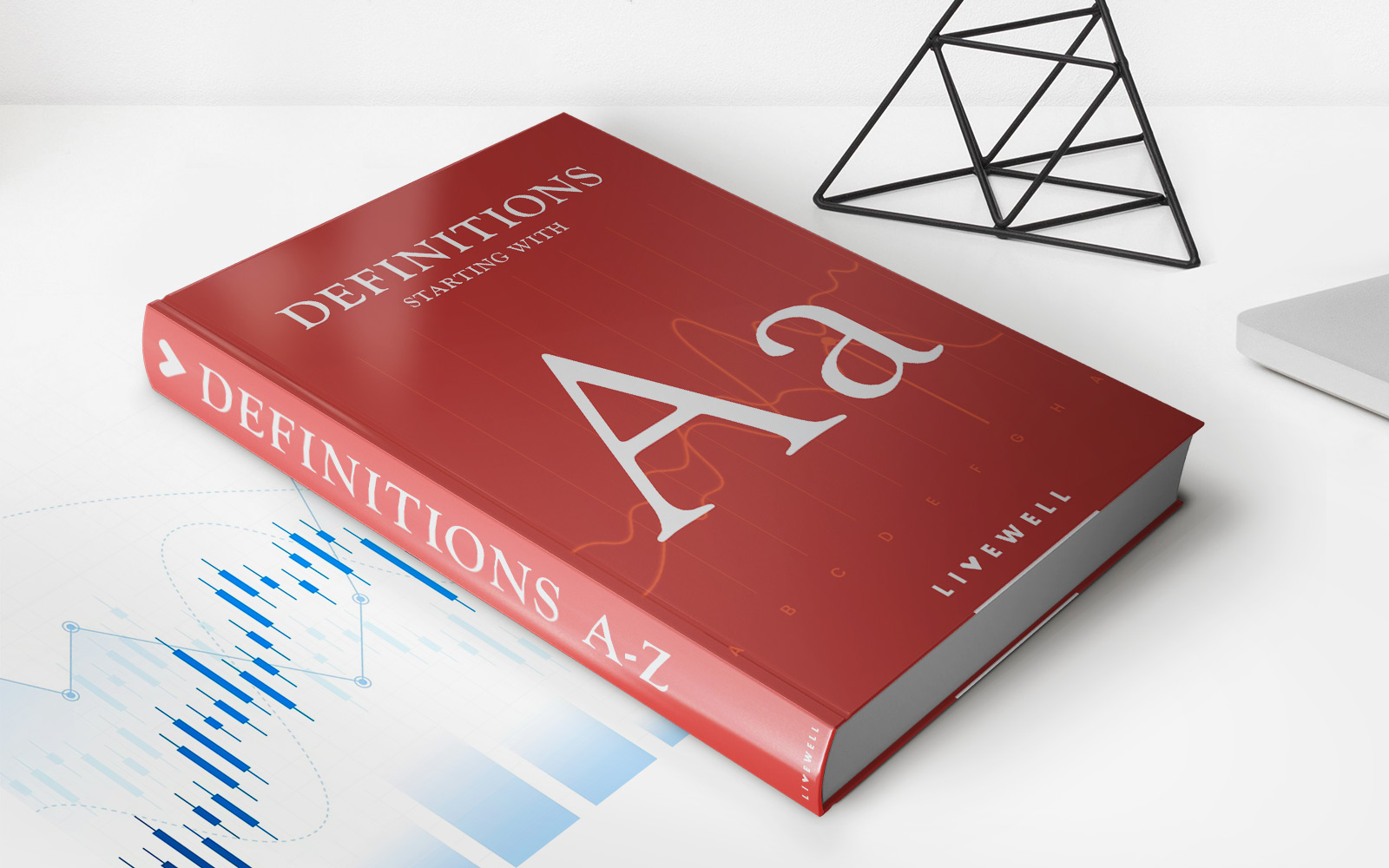

Finance
What Is An APR For A Car?
Published: March 3, 2024
Learn what APR means for car finance and how it impacts your loan. Understand the importance of APR when purchasing a vehicle.
(Many of the links in this article redirect to a specific reviewed product. Your purchase of these products through affiliate links helps to generate commission for LiveWell, at no extra cost. Learn more)
Table of Contents
Introduction
Understanding the Importance of APR for Car Loans
When it comes to purchasing a car, many individuals rely on financing options to make the acquisition more manageable. One crucial aspect of car financing that significantly impacts the overall cost of the loan is the Annual Percentage Rate (APR). Understanding the concept of APR for a car loan is essential for anyone considering financing a vehicle.
The APR represents the annual cost of the loan, including both the interest and any additional fees. It provides a comprehensive view of the total cost of borrowing, making it a vital factor to consider when evaluating different car loan options. While the interest rate is a significant component of the APR, it also encompasses other charges, such as origination fees, discount points, and other finance charges.
In this article, we will delve into the intricacies of APR for car loans, exploring its significance, the factors influencing it, and how it can impact the overall affordability of a car loan. By gaining a deeper understanding of APR and its implications, readers will be better equipped to make informed decisions when navigating the car financing process.
Understanding APR for a Car Loan
Annual Percentage Rate (APR) for a car loan is a crucial metric that encapsulates the total cost of borrowing. It represents the annualized interest rate, including additional fees and charges, providing a comprehensive overview of the financial implications associated with the loan. Understanding the components of APR is essential for individuals seeking to finance a vehicle.
When evaluating car loan options, it’s common for lenders to advertise attractive interest rates. However, these rates may not fully reflect the actual cost of the loan. The APR, on the other hand, incorporates various expenses, such as loan origination fees, broker fees, and certain closing costs, offering a more accurate representation of the total borrowing cost.
It’s important to note that the APR for a car loan also considers the loan term. A longer loan duration can result in higher overall interest payments, contributing to an increased APR. As such, borrowers should carefully assess the trade-offs between a longer loan term and the associated rise in the APR, balancing their monthly payment affordability with the long-term cost of the loan.
Moreover, understanding the distinction between fixed and variable APR is crucial. A fixed APR remains constant throughout the loan term, providing predictability and stability in monthly payments. On the other hand, a variable APR is subject to fluctuations based on market conditions, potentially leading to varying monthly payments over time.
By comprehending the intricacies of APR for a car loan, borrowers can make informed decisions, selecting a financing option that aligns with their financial goals and preferences. The next section will delve into the various factors that influence the APR for car loans, shedding light on the elements that contribute to the overall cost of borrowing for a vehicle.
Factors Affecting APR for a Car Loan
Several key factors influence the Annual Percentage Rate (APR) for a car loan, shaping the overall cost of borrowing and the subsequent monthly payments. Understanding these determinants is essential for individuals seeking to secure favorable financing for their vehicle purchase.
- Credit Score: One of the primary factors impacting the APR for a car loan is the borrower’s credit score. Lenders use credit scores to assess the individual’s creditworthiness and the associated risk. A higher credit score often translates to a lower APR, reflecting the borrower’s favorable credit history and reduced lending risk.
- Loan Term: The duration of the loan plays a significant role in determining the APR. Shorter loan terms typically result in lower APRs, as the total interest paid over the loan period is reduced. Conversely, longer loan terms may lead to a higher APR, reflecting the extended period over which interest accrues.
- Down Payment: The size of the down payment can influence the APR for a car loan. A larger down payment often signals financial stability and commitment, potentially leading to a lower APR. Conversely, a smaller down payment may result in a higher APR, as it represents a higher loan-to-value ratio and increased lending risk.
- Vehicle Age and Mileage: The age and mileage of the vehicle being financed can impact the APR. Newer vehicles may qualify for more favorable APRs compared to used cars, reflecting the perceived reliability and value retention associated with newer models.
- Debt-to-Income Ratio: Lenders consider the borrower’s debt-to-income ratio when determining the APR. A lower ratio, indicative of manageable debt levels in relation to income, may contribute to a lower APR, reflecting the borrower’s capacity to handle additional debt responsibly.
- Market Conditions: Economic factors and market conditions can influence the prevailing interest rates, subsequently impacting the APR for car loans. Fluctuations in the broader economic landscape can lead to changes in lending rates, directly influencing the APR offered by financial institutions.
By comprehending the multifaceted nature of the factors affecting APR for a car loan, borrowers can strategically position themselves to secure more favorable financing terms. The next section will delve into the significance of APR for a car loan, highlighting its implications for the overall affordability of the loan and the long-term financial impact on borrowers.
Importance of APR for a Car Loan
The Annual Percentage Rate (APR) for a car loan holds significant importance in the realm of vehicle financing, exerting a profound impact on the overall cost of borrowing and the financial implications for the borrower. Understanding the importance of APR is crucial for individuals navigating the car loan landscape, as it directly influences the affordability and long-term financial outcomes of the loan.
One of the primary reasons why APR is pivotal in the context of car loans is its comprehensive nature. Unlike the nominal interest rate, which solely reflects the cost of borrowing based on the principal amount, the APR encapsulates the interest and any additional fees, offering a holistic view of the total borrowing cost. This enables borrowers to make informed comparisons between different loan options, considering the complete financial burden associated with each.
Moreover, the APR significantly impacts the monthly payments and the overall affordability of the car loan. A lower APR translates to reduced interest expenses, leading to more manageable monthly payments. Conversely, a higher APR can result in elevated interest costs, potentially stretching the borrower’s budget and impacting their financial stability over the loan term.
Additionally, the APR directly influences the total interest paid over the life of the loan. Even minor differences in the APR can culminate in substantial disparities in the overall interest expenses. By securing a lower APR, borrowers can potentially save a significant amount in interest payments, enhancing their long-term financial well-being and minimizing the total cost of the vehicle.
Furthermore, the APR for a car loan plays a pivotal role in determining the feasibility of refinancing options in the future. A favorable APR not only facilitates more affordable initial financing but also sets the stage for potential refinancing opportunities, enabling borrowers to capitalize on lower interest rates and improved loan terms down the line.
By recognizing the importance of APR for a car loan, borrowers can make informed decisions, strategically selecting financing options that align with their financial goals and preferences. The subsequent section will explore how individuals can effectively compare APR for car loans, empowering them to navigate the financing landscape with confidence and clarity.
How to Compare APR for Car Loans
Effectively comparing Annual Percentage Rates (APRs) for car loans is crucial for individuals seeking to secure the most favorable financing terms for their vehicle purchase. By carefully evaluating and contrasting APRs from different lenders, borrowers can make informed decisions, ultimately selecting a car loan that aligns with their financial objectives and preferences.
One fundamental approach to comparing APRs for car loans involves conducting thorough research across multiple lenders. By exploring a diverse array of financial institutions, including banks, credit unions, and online lenders, borrowers can gain insight into the prevailing APR ranges and identify competitive offers that suit their financial profile.
When comparing APRs, it’s essential to consider the loan term and its impact on the overall cost of borrowing. While a lower APR is generally favorable, borrowers should assess the corresponding loan duration, ensuring that the monthly payments and the total interest paid align with their financial capabilities and objectives.
Additionally, borrowers should scrutinize the various fees and charges associated with each car loan offer. While the APR provides a comprehensive view of the borrowing cost, understanding the specific fees, such as origination fees, prepayment penalties, and closing costs, can shed light on the overall affordability and potential long-term savings associated with the loan.
Furthermore, leveraging online tools and calculators can aid in comparing APRs and evaluating the financial implications of different car loan options. These resources enable borrowers to input various APRs, loan terms, and loan amounts, facilitating side-by-side comparisons and empowering individuals to make data-driven decisions.
Seeking pre-approval from multiple lenders can also provide valuable insights into the APRs available based on the borrower’s financial profile. This proactive approach allows individuals to gauge the competitiveness of different offers, potentially leveraging pre-approval offers to negotiate more favorable terms with their preferred lender.
Ultimately, by meticulously comparing APRs for car loans and considering the associated loan terms, fees, and pre-approval offers, borrowers can navigate the financing landscape with confidence, securing a car loan that optimally aligns with their financial goals and sets the stage for a favorable and financially sound vehicle purchase.
Conclusion
As individuals embark on the journey of purchasing a car and exploring financing options, understanding the nuances of the Annual Percentage Rate (APR) for car loans is paramount. The APR serves as a comprehensive indicator of the total cost of borrowing, encompassing the interest rate and additional fees, and exerting a profound impact on the affordability and long-term financial implications of the loan.
By comprehending the factors influencing APR, including credit scores, loan terms, and market conditions, borrowers can strategically position themselves to secure more favorable financing terms. Moreover, recognizing the significance of APR empowers individuals to make informed comparisons between different loan offers, ultimately selecting a car loan that aligns with their financial objectives and preferences.
It is crucial for borrowers to prioritize thorough research and comparison when evaluating APRs from various lenders. Scrutinizing the loan terms, fees, and pre-approval offers enables individuals to make data-driven decisions, fostering confidence in securing a car loan that not only meets their immediate needs but also sets the stage for long-term financial stability.
Ultimately, a nuanced understanding of APR for car loans equips individuals with the knowledge and insight needed to navigate the financing landscape with clarity and confidence, paving the way for a financially sound and rewarding vehicle purchase experience.














